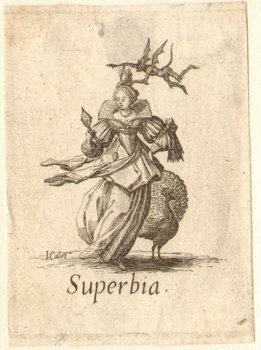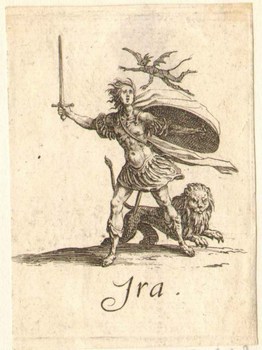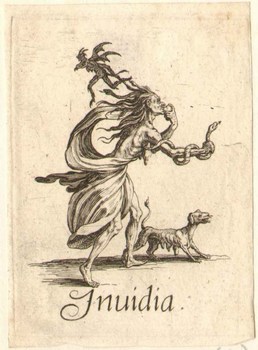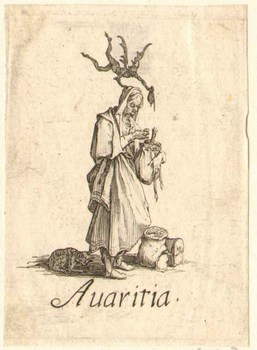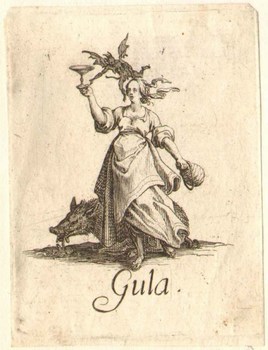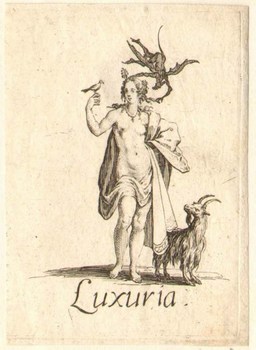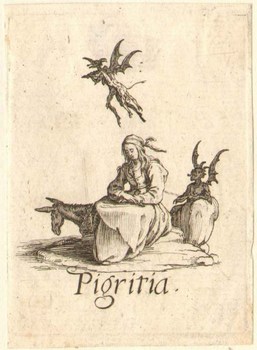THE DEADLY SINS
Complete series of seven plates depicting
representing the deadly sins;
The series may have been executed after
Callot's return in Nancy, or while he was
still in Florence;
some of the figures are indeed reminiscent
of the demons in the temptation of St
Anthony he engraved during his stay in the
Italian city.
Reference: Lieure 354-360 ( II / IV and I /
II )
Early states before publishers
addresses and numbers added in later states
but with the signature I.Callot on Superbia.
The states before the signature of I.Callot
is mentioned R.R.R. by Lieure (extremely
rare)
